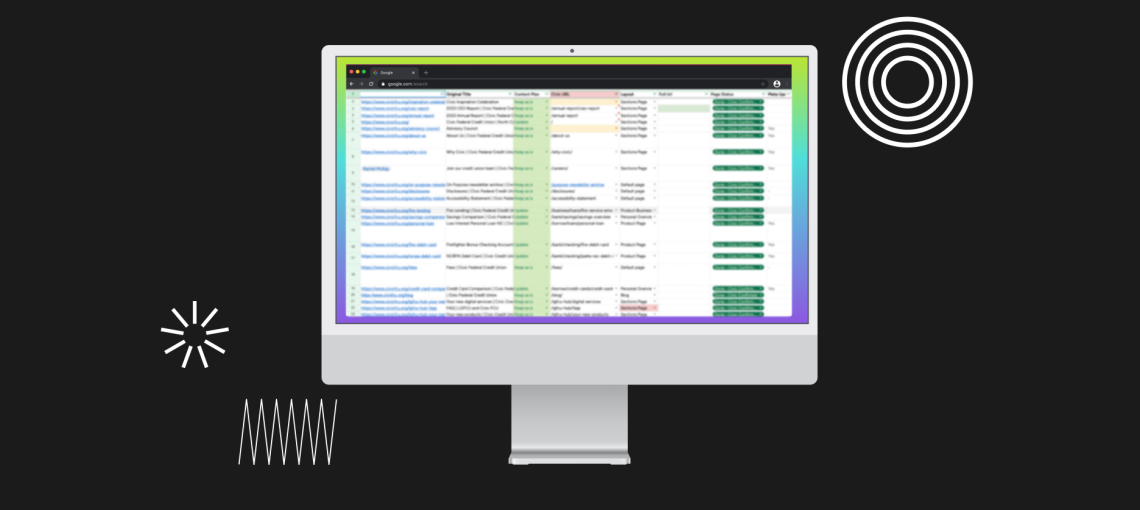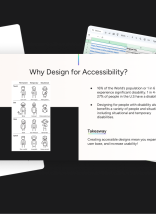When restructuring a complex website, an important first step is to inventory existing content and analyze findings in an audit.
The purpose of a content audit is to see which pages exist, decide which ones are valuable, and expose any hidden issues with the website.
Content audits tend to expose issues with site structure, technical SEO, orphaned pages, or content value. Take a look at how it works!
Unveil any strange categories, taxonomies, or hierarchical issues.
With an outdated or limiting CMS, many companies get in the habit of creating pages without housing them in a logical place. Websites can grow larger over time, creating a mess of page categories, tagging systems, and menus.
By closely examining pages, a content audit breaks down this mess to guide decisions about the restructure. And good news for you – with a combination of an updated CMS and clear site structure, it will be easy for you to create new pages moving forward.
Diagnose technical SEO issues.
A content audit can also help you diagnose any missed opportunities with SEO. And we’re not talking about expensive monthly backlinking campaigns. There are many ways to optimize your website for search engines by simply building SEO-optimized page templates.
The content inventory step will show all meta and H1 tags in plain view, allowing marketers to quickly find patterns in how they were generated. Are these page elements exceeding character limits? Missing keywords? Missing altogether? Your new website should have auto-generated meta tags that fall within guidelines. From there, follow best practices to manually optimize key pages.
At Atlantic BT, we will even take content audits a step further, cross-referencing additional tools to find slow pages and opportunities to incorporate schema markup.
Find orphaned pages.
During a content audit, we trace navigation to all pages and get familiar with paths users can take. If we see a page listed and cannot find a way to navigate there, it’s likely an orphaned page.
Orphaned pages, or pages that are impossible to get to by clicking through a website, are harmful for both SEO and user experience. According to Search Engine Journal:
Orphan pages aren’t great for either users or crawlers.
Users can’t reach those pages through your site’s natural structure so if there’s important or useful information on those pages, it’s wasted.
This can create a frustrating user experience.
With no internal links, no authority is passed to the pages, and search engines have no semantic or structural context in which to evaluate the page.
Without any way of knowing where the page fits into your site as a whole, it can be more difficult to determine which queries the page is relevant for.
If an orphaned page seems unimportant, you should likely delete it. If there is some value, we’ll find a way to fit it into a new site structure and ensure there is a navigation path.
Find groups of low-value content.
Do you have multiple versions of similar pages? A random tagging system for blog posts? Our team can determine the importance of content by referencing analytics data or understanding your business goals.
However, we consider a content audit a collaborative effort. We’ll rely on you to ultimately decide if a page is valuable for your business.
What step comes after the content audit?
An outdated website structure feels like a mess. Even after a content inventory reveals the existing site structure, it can be daunting to take steps toward simplification.
Based on our findings in the content audit, Atlantic BT can make recommendations for a new website structure. Does it make sense to categorize by industry, services, or personas? We can help you visualize the options and design a site that is simple for visitors to navigate. Give us a call to learn more.





